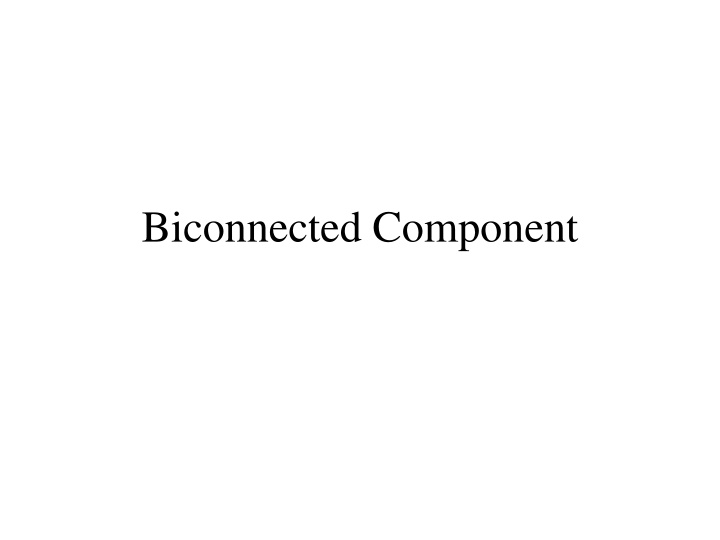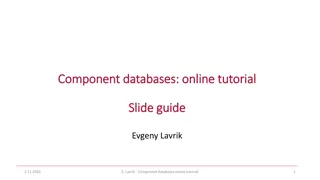
Biconnected Components and Articulation Points in Graphs
Explore the concept of biconnected components and articulation points in graphs through detailed explanations and visual illustrations. Learn how these fundamental graph theory concepts impact the connectivity of a graph and identify crucial vertices that affect the graph's structure.
Download Presentation

Please find below an Image/Link to download the presentation.
The content on the website is provided AS IS for your information and personal use only. It may not be sold, licensed, or shared on other websites without obtaining consent from the author. If you encounter any issues during the download, it is possible that the publisher has removed the file from their server.
You are allowed to download the files provided on this website for personal or commercial use, subject to the condition that they are used lawfully. All files are the property of their respective owners.
The content on the website is provided AS IS for your information and personal use only. It may not be sold, licensed, or shared on other websites without obtaining consent from the author.
E N D
Presentation Transcript
Articulation Point : A vertex is said to be an articulation point in a graph if removal of the vertex and associated edges disconnects the graph. So, the removal of articulation points increases the number of connected components in a graph. Articulation points are sometimes called cut vertices.
The given graph is clearly connected. Now try removing the vertices one by one and observe. Removing any of the vertices does not increase the number of connected components. So the given graph is Biconnected.
In the graph if the vertex 2 is removed, then here's how it will look if vertex 3 is removed there will be no path left to reach vertex 0 from any of the vertices 1, 2, 4 or 5. And same goes for vertex 4 and 1. Removing vertex 4 will disconnect 1 from all other vertices 0, 2, 3 and 4. So the graph is not Biconnected.





















